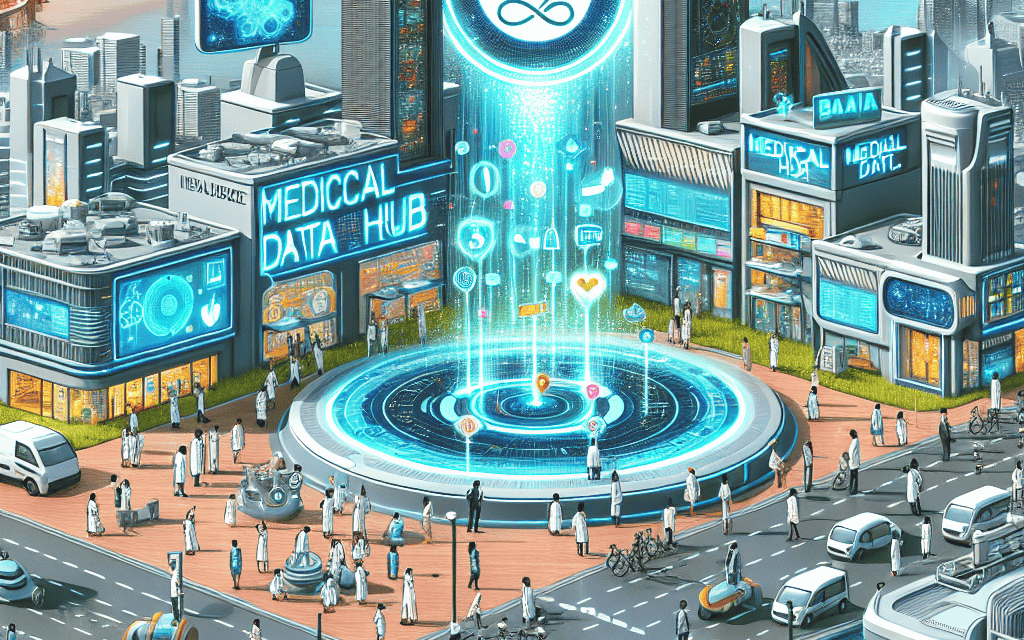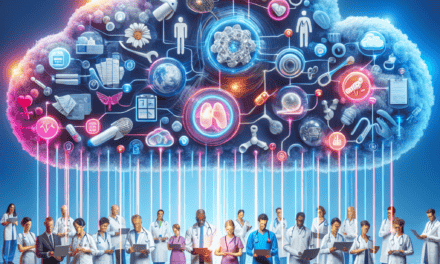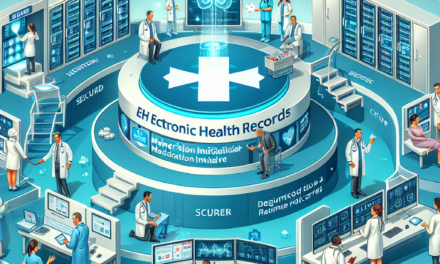Launch of Medical Data Hub in China’s Greater Bay Area
The Greater Bay Area (GBA) in China, which encompasses Hong Kong, Macau, and nine cities in Guangdong province, is poised to become a global leader in innovation and technology. One of the most significant developments in this region is the launch of a Medical Data Hub, aimed at revolutionizing healthcare delivery and research. This article explores the implications of this initiative, its structure, benefits, challenges, and future prospects.
1. Overview of the Greater Bay Area
The Greater Bay Area is a dynamic economic region that aims to integrate the strengths of its constituent cities to foster innovation and economic growth. With a population exceeding 70 million and a combined GDP of over $1.5 trillion, the GBA is one of the most vibrant economic zones in the world.
Key cities in the GBA include:
- Hong Kong: A global financial hub with advanced healthcare infrastructure.
- Guangzhou: A major city known for its manufacturing and technology sectors.
- Shenzhen: Often referred to as China’s Silicon Valley, it is a center for tech innovation.
- Macau: Known for its tourism and gaming industries, it is also expanding its healthcare capabilities.
The GBA’s strategic location and diverse economic landscape make it an ideal setting for the development of a Medical Data Hub. This initiative aims to leverage big data, artificial intelligence, and cloud computing to enhance healthcare services across the region.
2. The Structure of the Medical Data Hub
The Medical Data Hub in the Greater Bay Area is designed to be a centralized platform that integrates healthcare data from various sources, including hospitals, clinics, research institutions, and public health organizations. The hub will utilize advanced technologies to ensure data security, interoperability, and accessibility.
Key components of the Medical Data Hub include:
- Data Integration: The hub will aggregate data from multiple healthcare providers, creating a comprehensive database that can be accessed by authorized personnel.
- Interoperability Standards: Establishing common data standards will facilitate seamless data exchange between different systems and organizations.
- Data Analytics: Advanced analytics tools will be employed to derive insights from the data, enabling better decision-making in patient care and public health.
- Security Measures: Robust cybersecurity protocols will be implemented to protect sensitive health information from breaches and unauthorized access.
- Collaboration Framework: The hub will foster collaboration among healthcare providers, researchers, and technology companies to drive innovation.
The structure of the Medical Data Hub is designed to be flexible and scalable, allowing it to adapt to the evolving needs of the healthcare sector. By creating a unified platform for data sharing, the hub aims to enhance the quality of care and improve health outcomes across the GBA.
3. Benefits of the Medical Data Hub
The launch of the Medical Data Hub in the Greater Bay Area presents numerous benefits for healthcare providers, patients, and researchers. By harnessing the power of data, the hub aims to transform the healthcare landscape in the region.
Some of the key benefits include:
- Improved Patient Care: With access to comprehensive patient data, healthcare providers can make more informed decisions, leading to better diagnosis and treatment plans.
- Enhanced Research Opportunities: Researchers will have access to a wealth of data, enabling them to conduct studies that can lead to breakthroughs in medical science.
- Cost Efficiency: By streamlining data management and reducing redundancies, the hub can help lower healthcare costs for providers and patients alike.
- Public Health Monitoring: The hub will facilitate real-time monitoring of public health trends, allowing for quicker responses to outbreaks and health crises.
- Personalized Medicine: The integration of genetic and lifestyle data will enable the development of personalized treatment plans tailored to individual patients.
For instance, a case study from Shenzhen demonstrated how data integration improved patient outcomes in chronic disease management. By analyzing data from various sources, healthcare providers were able to identify at-risk patients and implement preventive measures, resulting in a significant reduction in hospital admissions.
4. Challenges and Considerations
While the Medical Data Hub holds great promise, several challenges must be addressed to ensure its successful implementation. These challenges range from technical issues to ethical considerations.
Some of the key challenges include:
- Data Privacy Concerns: The collection and sharing of sensitive health information raise significant privacy issues. Ensuring compliance with data protection regulations is crucial.
- Interoperability Issues: Different healthcare systems may use varying data formats and standards, making integration challenging.
- Funding and Resources: Establishing and maintaining the hub will require substantial investment in technology and human resources.
- Stakeholder Buy-In: Gaining the support of healthcare providers, government agencies, and patients is essential for the hub’s success.
- Technological Limitations: The rapid pace of technological advancement means that the hub must continuously evolve to remain relevant.
Addressing these challenges will require collaboration among stakeholders, including government agencies, healthcare providers, and technology companies. For example, the Hong Kong government has initiated discussions with various stakeholders to develop a regulatory framework that balances innovation with patient privacy.
5. Future Prospects and Innovations
The future of the Medical Data Hub in the Greater Bay Area is bright, with numerous opportunities for innovation and growth. As technology continues to advance, the hub is expected to evolve and expand its capabilities.
Potential future developments include:
- Artificial Intelligence Integration: AI algorithms can analyze vast amounts of data to identify patterns and predict health outcomes, enhancing decision-making in clinical settings.
- Telemedicine Expansion: The hub can support telemedicine initiatives, allowing patients to receive care remotely and improving access to healthcare services.
- Blockchain Technology: Implementing blockchain can enhance data security and integrity, ensuring that patient information is tamper-proof.
- Wearable Health Technology: Integrating data from wearable devices can provide real-time health monitoring and personalized feedback to patients.
- Global Collaboration: The hub can serve as a model for other regions, fostering international collaboration in healthcare research and innovation.
As the Medical Data Hub continues to develop, it has the potential to position the Greater Bay Area as a leader in healthcare innovation on a global scale. By leveraging data and technology, the region can improve health outcomes and set new standards for healthcare delivery.
Conclusion
The launch of the Medical Data Hub in China’s Greater Bay Area represents a significant step forward in the integration of technology and healthcare. By creating a centralized platform for medical data, the hub aims to enhance patient care, drive research, and improve public health outcomes.
While challenges remain, the potential benefits of the hub are immense. With careful planning, collaboration, and investment, the Greater Bay Area can become a model for healthcare innovation, setting the stage for a healthier future for its residents and beyond.
In summary, the Medical Data Hub is not just a technological advancement; it is a transformative initiative that has the power to reshape the healthcare landscape in the Greater Bay Area and beyond. As stakeholders work together to overcome challenges and harness the potential of data, the future of healthcare in this vibrant region looks promising.





